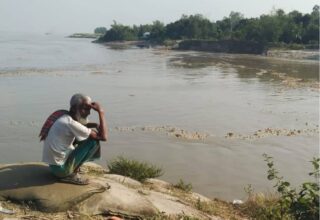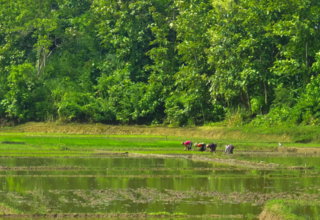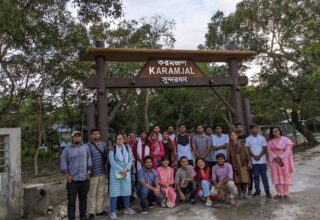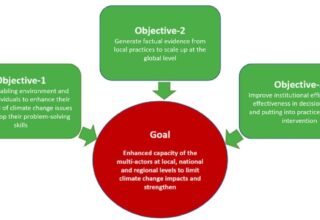(Article originally published here)
The policies and their implementation must aim to locate people to cities other than Dhaka and Chittagong
River erosion, continuous flooding, and long droughts — these calamities are everyday realities for some Bangladeshis. They affect livelihoods, disrupt lives and uproot people from their homes. Observations from a recent study show that migration is an important strategy to adapt to the effects of climate change. A joint research conducted by Refugee and Migratory Movements Research Unit (RMMRU, Dhaka University) and GIZ (German development agency) called, “Adaptation strategies of seventy poor urban migrant/households in the context of climate change,” reflects patterns and decisions urban migrants make in Natore, Sirajganj, and Rajshahi in northern Bangladesh.
Motivations for migrating
The study looked at the reasons, decisions, choices. and lifestyles of seventy migrants who are mainly slum dwellers in urban areas. The decision of these slum dwellers to migrate are influenced by many social, economic and demographic factors. These include family size, economic hardship, shortage of land, attitudes towards farming, promise of a better future, but are deeply rooted in environmental or climatic stresses in their areas of origin.
Many migrants in Rajshahi experienced three environmental stresses influencing their decision to move — riverbank erosion, flood, and drought. In Sirajganj, most migrants were displaced due to riverbank erosion. In Natore, flooding and drought were the main push factors. These individuals and communities are adapting to a changing climate by taking that crucial decision migrate to improve their social and economic standing.
Employment
Migration to these areas happen short-term, cyclically, seasonally or permanently. These migrants are resilient and resourceful people — immediately after arriving to their new destination, they develop survival strategies to ensure their livelihood. They receive information on job prospects and access to job markets through family and village based social networks. However, most of the sectors in which the migrants work are outside the jurisdiction of labour law in the informal service sector, often subject to poor working conditions, low wages, no overtime, and physical harassment. In all three study areas, there was a significant absence of opportunity for work within the formal sector.
Settled vs new migrants
Compared to recent migrants, those who are more settled have a better income. They have benefited from social networks and diversified their income sources such as small businesses. Migrants to Sirajganj seasonally work in the brick kilns in the Chittagong Hill Tracts as well as manual labour and paddy harvesting in Tangail, Maniganj, Manikganj, Sylhet, and Sunamgonj. A small percentage of their family members also work in garment factories in greater Dhaka.
Social networks
Most of the slums are located on public property near the roadside, railway stations, and bus stations. In each slum, most of the dwellers originated from one district. This concentrated presence of migrants is a result of a network of friends and family who had migrated before, without whom, new migrants might have difficulties in finding shelter and building their new lives. They play an important role in assisting new migrants in finding shelter, jobs, and other resources.
Supporting migrants
Our research vividly shows that people decide to move from villages to the cities when their livelihoods become difficult due to climate change. It is a critical strategy to adapt to environmental and economic realities. This necessitates reformulation of the existing policies on migration in the context of climate change. It was found that the majority of migrants would like to stay or settle in the nearby urban areas, rather than migrate to megacities like Dhaka or Chittagong. To support them, policy-makers need to focus on the development of urban growth centres in nearby districts and upazillas with these facilities:
- Low cost housing with hygienic facilities
- Educational institutions
- Medical facilities
- Access to safe drinking water
- Sanitation
- Electricity
- Support to civil society organizations and NGOs who voice the concerns of migrants and demand national policy reforms
The Inter-governmental Panel on Climate Change (IPCC) acknowledges that “climate change over the 21st century is projected to increase the displacement of people” particularly in developing countries like Bangladesh. The Government of Bangladesh has allotted a significant amount from its own resources for adapting to climate change. Given the massive influx of migrants to urban areas, migration needs to be considered in any development planning so that that it occurs in a planned way. Currently it is happening in an unplanned manner, putting pressure on a city’s infrastructure, impeding city development. The policies and their implementation must aim to locate people to cities other than Dhaka and Chittagong. The projects under the Climate Change Trust Fund should incorporate cyclic migration of people from climate affected areas.







